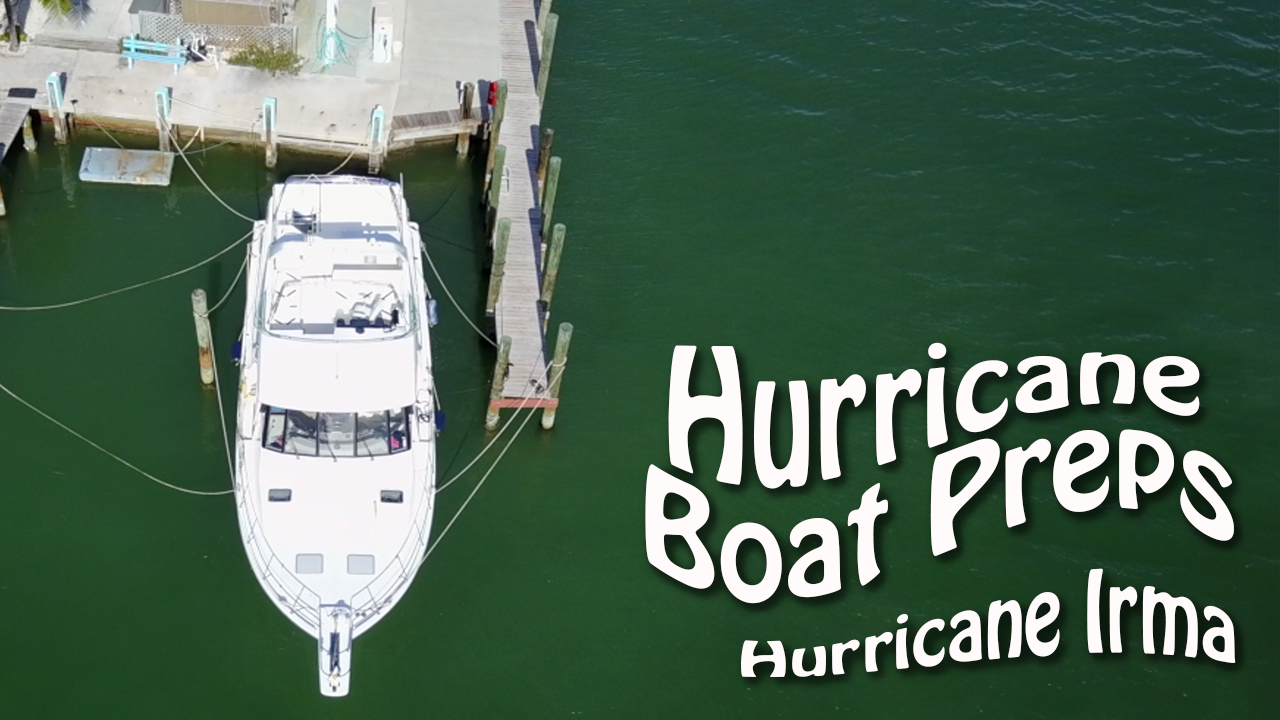
First of all… a big ole WAHOOOOO for it being December 1st! The 2017 Hurricane season is officially over.
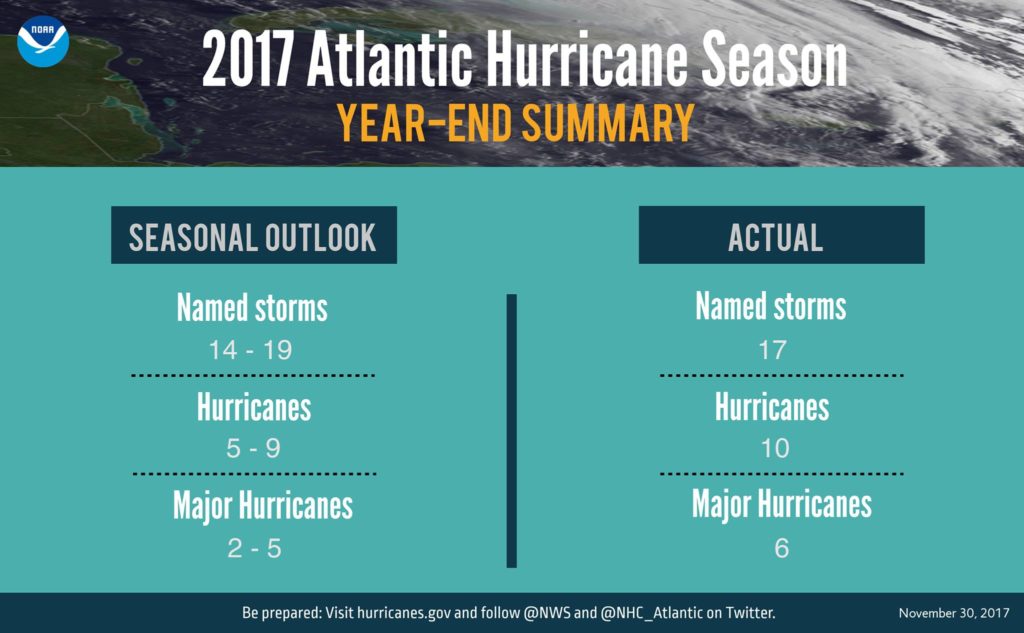 And while the season is over, many are still dealing with the fallout of the major storms that made landfall. Power is still not returned to the majority of the islands impacted, people are still homeless and cleaning up in Florida, Texas and the coasts.
And while the season is over, many are still dealing with the fallout of the major storms that made landfall. Power is still not returned to the majority of the islands impacted, people are still homeless and cleaning up in Florida, Texas and the coasts.
And we of course, even though we were incredibly lucky with our outcome, are still dealing with things aboard Y-Not.
We had several requests that we share the preps we made for Hurricane Irma before we left the boat in Marathon, Florida and evacuated ourselves out of the state in our RV.
And while don’t really credit our preps for our good fortune (they certainly helped, but LUCK and positive thinking did most of the work) – we’ve decided to share some video footage we took before and after with our thought process for the preps we made.
But please take this with a grain a salt. We are by no means ‘experts’ and this is NOT a how-to survive a catastrophic hurricane guide. Heck, we are barely newbies to boating. We had owned Y-Not almost exactly 6 months to the day, and were still learning basic knots.
So first, here’s the footage (it’s 27m long) and below the text version:
Decision 1: Where to Go?
When we decided we were going to be in Florida for hurricane season – and particularly the Keys – we thought we’d have options. If a hurricane was coming up the west coast, we’d head east. If it was going east, we’d go west.
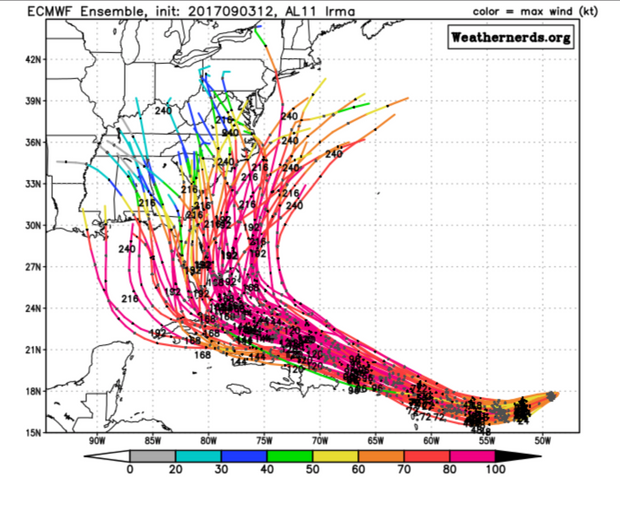
Irma however decided she was indecisive. Even up until landfall, models had her all over the state of Florida with no clear safe path.
Choices suggested by ‘Armchair Admirals”:
- Trying to make it into the Ockechobee waterway (seriously considered)
- Go to a marina up either coast (seriously considered, but no marinas gave us a call back in time)
- Head back to Snake Creek, middle of the Everglades, miles from land, to tie up in the mangroves (those who did, actually faired quite well – but that nowhere thing concerned us)
- Head out into the open waters of the Gulf or Atlantic (seriously, in an intercoastal cruising boat like a Bayliner? Uh no, we have several reports of this going very badly from those who tried.)
All of these decisions had considerable risk associated with them. Risks we weren’t willing to take.
What if we had a mechanical problem trying to make so many miles and were stranded in an unsafe place (several who tried had this exact scenario)? And there was no way we were riding this storm out onboard.
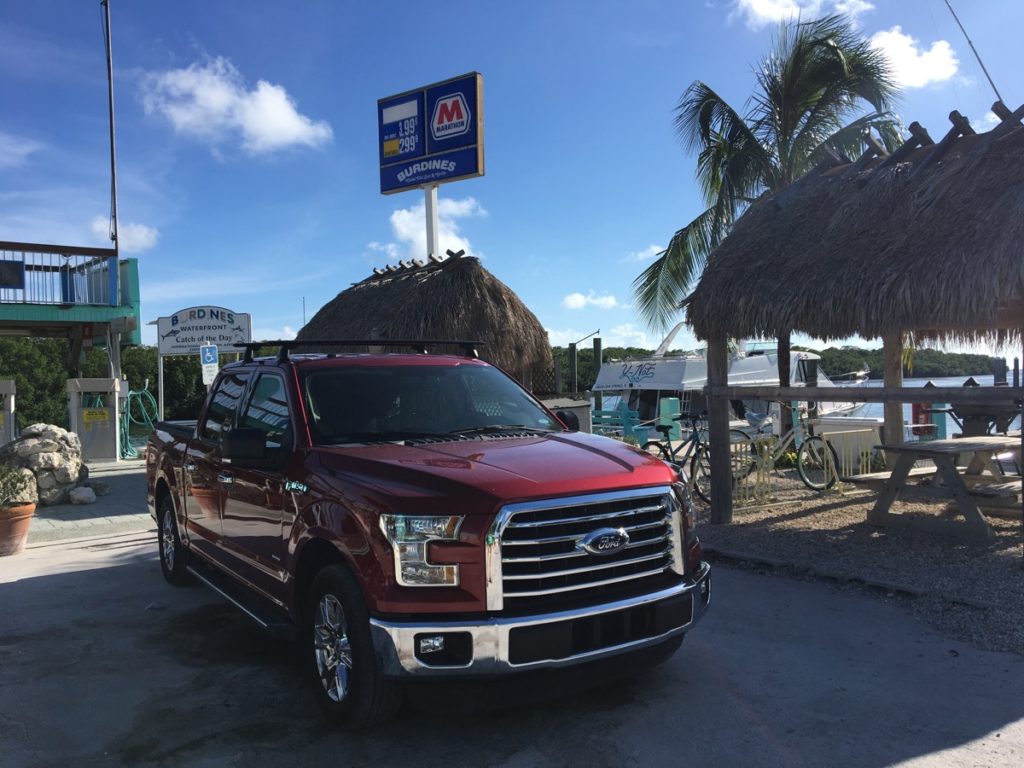
There simply was not a decision that we felt gave us any better odds than just staying put and doing the best we could.
Especially since we had the generosity of our host Randy handing us the keys to his big truck where we could pack our belongs into and get the heck out of dodge.
We also had our beloved vintage bus conversion (our other house) parked in Melbourne, FL – which was also in projected paths. It would be foolish to lose both our homes in the same storm.
Result: We felt confident the entire time we made the right decision to secure the boat in Marathon, and evacuate by RV. Even knowing we’d likely lose the boat if predictions held.
It was a hard decision. But the right one. And obviously, it turned out well.
Decision 2: Securing in our Slip
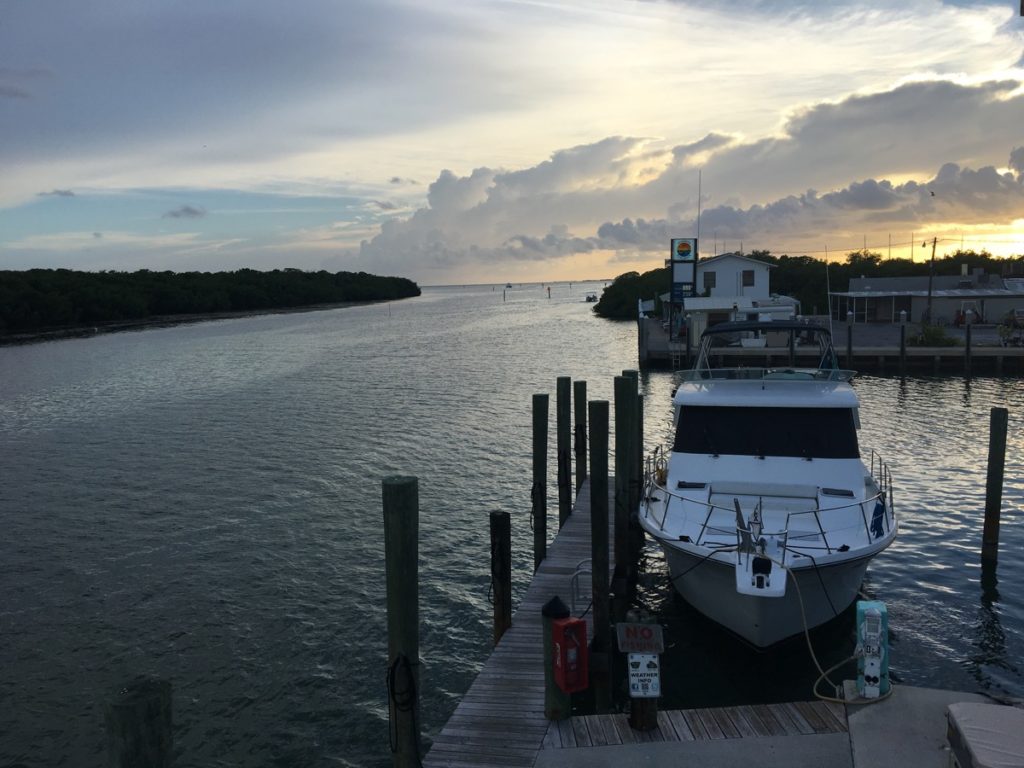
We did try to get a mooring ball at the Boot Key Harbor city marina just up the bay from us – thankfully, they were all out of balls large enough for our vessel. Because the majority of boats were lost in the harbor due to some anchored boats breaking free and causing a massive debris field that kept sweeping through the mooring field.
So, securing in our slip at Burdines Waterfront Marina was where we’d be. The marina had given us our choice of open slips to secure in.
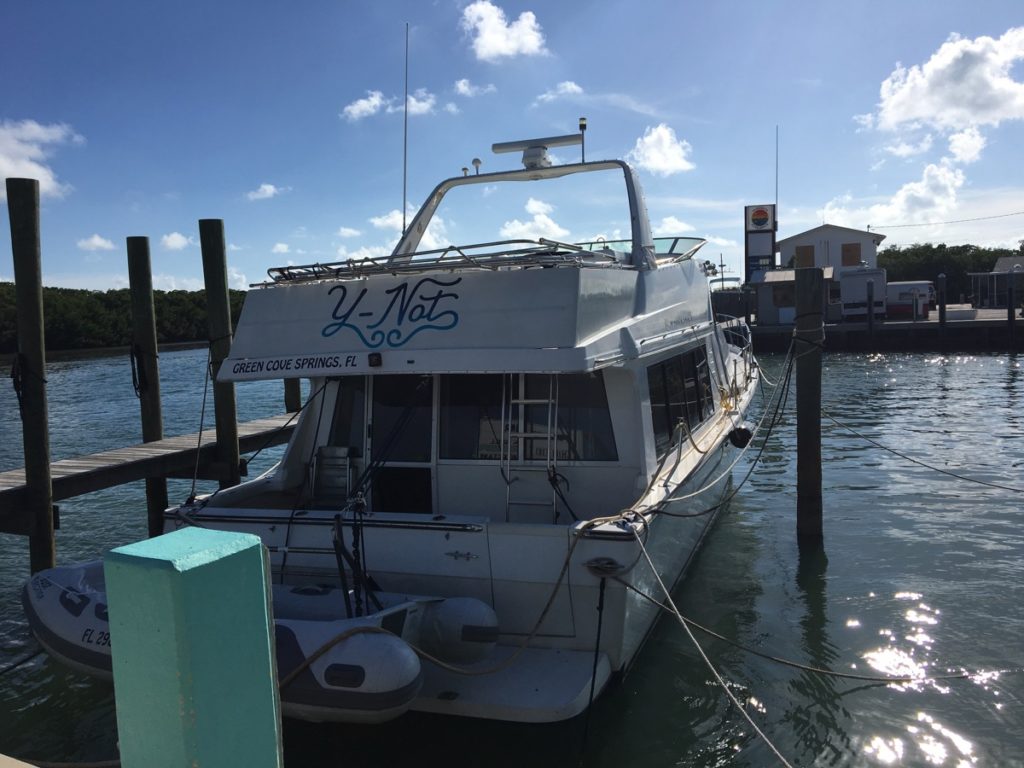
We opted to stay in our slip, as we did not share a T-dock with any other vessels – potentially lessening the impact on each other.
Next we had to decide if we were staying bow in (which gave us a sweet private back deck view to the open ocean), or reverse ourselves. We decided that going aft in gave us better options to secure and given the models at the time, the best wind protection.
Results: Turns out, the winds mainly came from our aft – likely causing more windage for us. But considering we held in our slip despite three aft port lines snapping, we did ok anyway.
Decision 3: Learning to Tie up a Boat
Our training had really only covered basic line handling, and we were getting pretty good at assessing a new slip and implementing effective lines.
We had already secured for a couple of 50+ mph storms, so had learned by trial & error to better secure our boat in a slip by doing something called a ‘spider web’. Which is basically setting a series of longer spring lines that keeps your boat hovering away from docks.
A storm of this caliber is a whole other can of worms, so off to the Google we went to soak up what we could (if I was a better blogger, I would have saved links I used and shared them.. so you’ll have to forgive me, we were a weeee bit focused on saving our butts.)
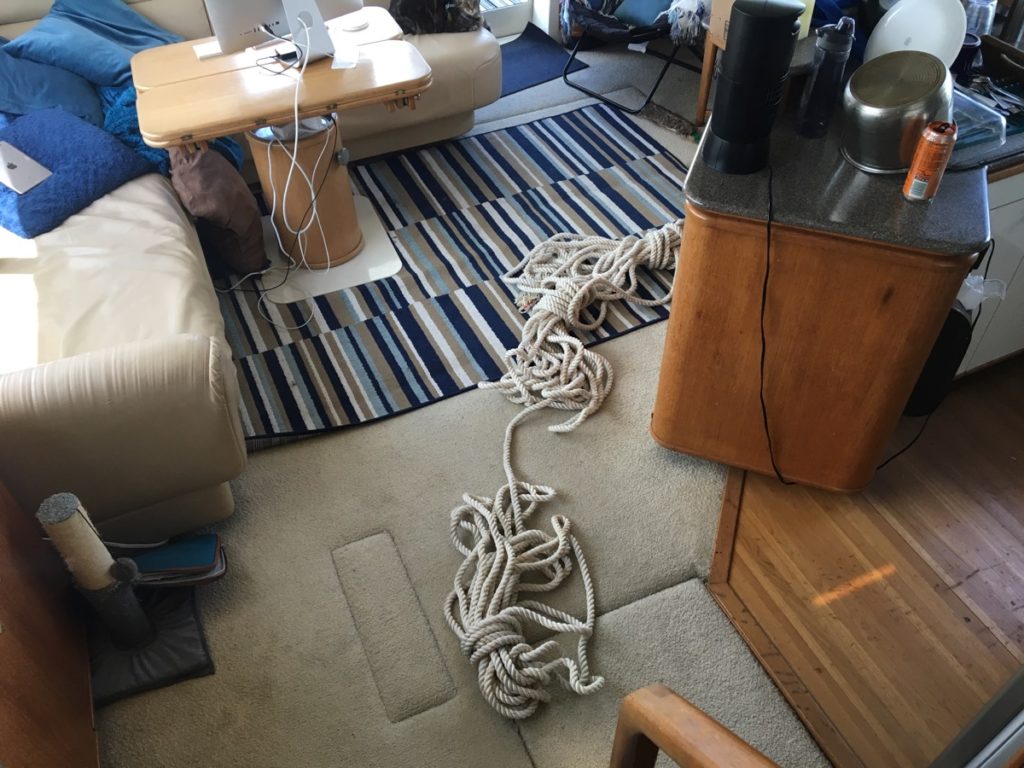
With a big storm, you want not only your dock lines, but to double up with storm lines. Which thankfully our prior owner had given us a couple tubs full. We had lots of super long 1″ lines to work with to double up our lines.
Lesson learned: We do wish we had taken the time to inspect them long before we needed them. Thankfully, they all were in decent shape.
Next, you have to anticipate storm surge, which in our case was predicted to be anywhere from 10-20′.
What this means for lines is that they have to be long enough to allow your boat to float with the water as it rises and falls AND still tight enough to actually keep your boat in your slip. Some folks opt to stay on their boat and constantly adjust lines throughout the storm, but that wasn’t happening for us (no way, no how).
So we had to pre-think this carefully so we didn’t end up with all our lines snapped or our boat pulled under from lines alone. Thankfully we did have a wide slip which made this easier.
This slip was a challenge however even in mild winds – as the side T-Dock only came up midship and we had nothing in front of that to secure to.
I spent some time mapping out plans for tying our lines that would be the most effective.
And we implemented as best we could:
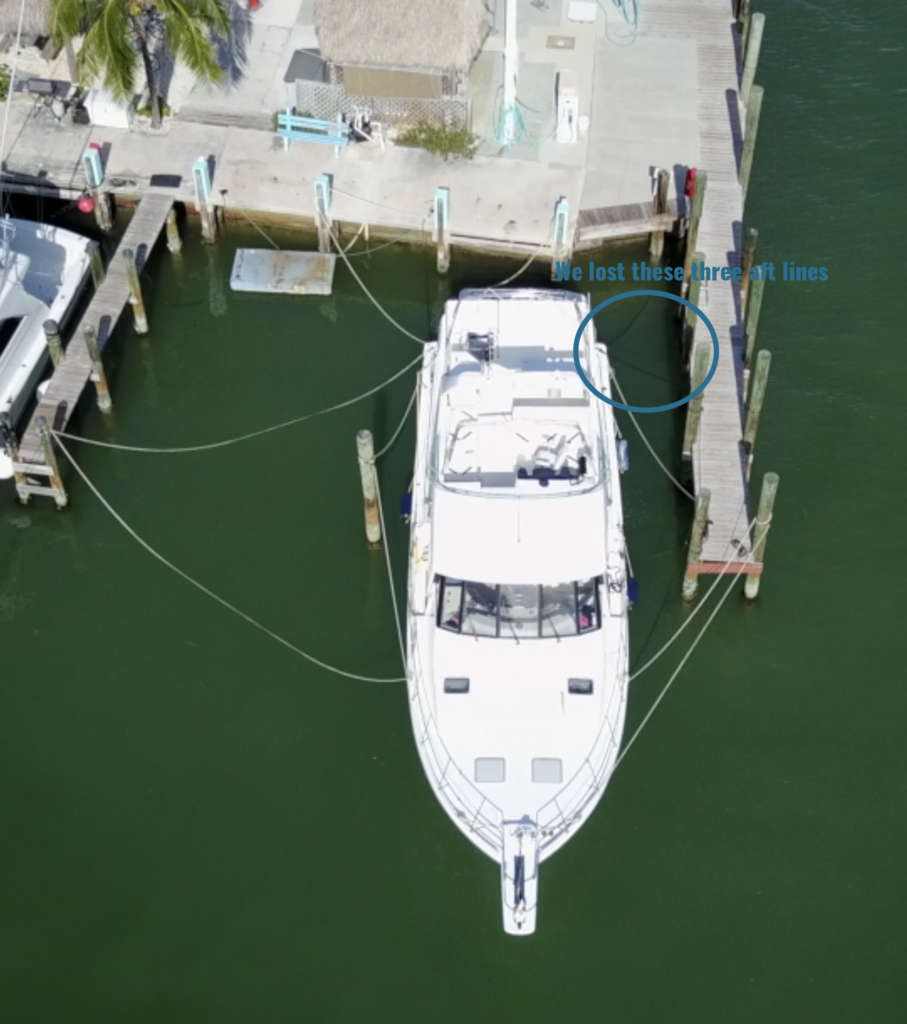
Results: In the end, while certainly not perfect – I think we did well. We lost 3 or our 14 lines – all three on the port side aft (the direction the wind was pushing us from).
And all three were frayed within the chafe guards (don’t buy these, for reference only!) we used, which every guide we read said were absolutely essential to have to protect your lines. Hah.
Well, obviously not the velcro kind we had.
I’m so thankful the extras we ordered in did not arrive in time, and I used kitchen towels wrapped in duct tape for all the rest. Apparently old fire hose is excellent too – we’ll be on the look out for some to add to our gear.
Decision 4: Anchor or No Anchor?
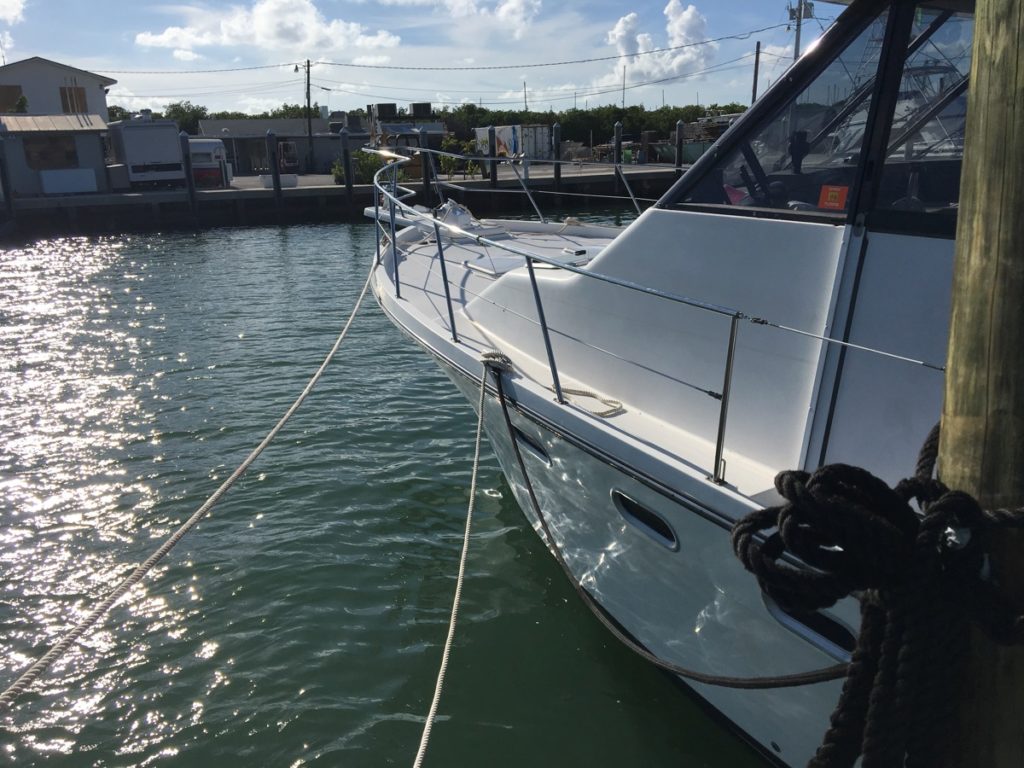
We had gotten the advice to also toss out an anchor in front of the boat in our slip, since had little to secure to otherwise. This would also keep us in the area should our lines break.
We tried to wrap our brains around the idea, and maybe it’s our newbie-ness, but we just couldn’t figure it out.
We’d have to weight the anchor rode down so that we weren’t blocking the entrance to the harbor – potentially making it more difficult for others.
And honestly, we couldn’t see how an anchor with proper scope would keep us in the slip AND be able to ride the storm surge out. And if we did lose our lines, wouldn’t we swing into the concrete walls across from us?
Result: So, we decided to not try to mess around with this. And turns out, we ended up not needing the extra security.
Decision 5: What About the Dinghy?
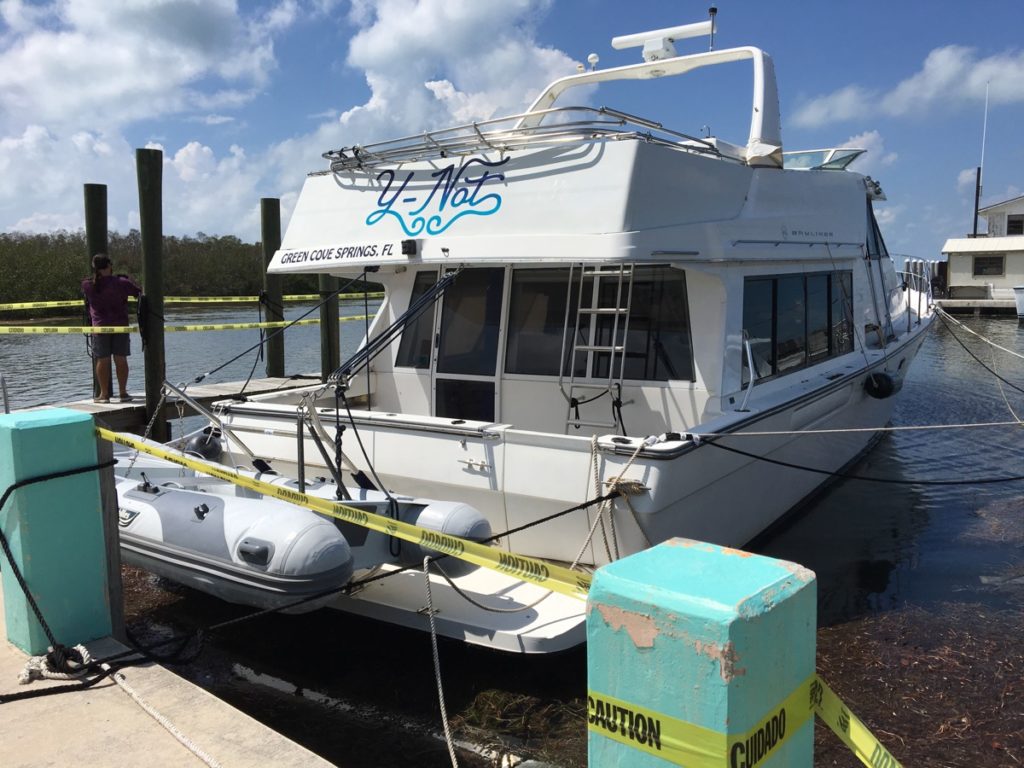
Ideally, we would have been able to get our brand new Achilles inflatable RIB dinghy onto the bow of the boat and secured it there. Or onto land.
But with our limited time, and no extra help to tap into (and no easy access to the bow) – it just wasn’t possible. And with the storm surge predicted, being on land might not have been a great idea anyway.
So, we decided to leave our dinghy attached to the aft our boat on our Dinghy Caddy mounting system (we do need to post about our setup at some point).
We took the outboard engine off and secured it in our cockpit and tied down the boat as best we could. We also deflated it a bit so that it wouldn’t pop when/if it hit the seawall behind us.
Basically, we were using it as a huge rear fender to help compensate for the lack of holding options on the bow of the boat.
Result: All and all, our decision seems to have have played out.
There’s a slight bend in the boat’s aluminum frame that should be easy to fix, and the boat is holding air. There is evidentce of rubbing on the bottom of the boat that a coat of bottom primer and paint should fix. And the Dinghy Caddy visually looks just fine.
Decision 6: What to do about Power?
It was pretty much a given that the power would go out at some point, and likely out for a while after the storm. Power is pretty important during a storm on a boat, more so than in a house or an RV.
Why? Bilge pumps. If there was a water leak that occurred, our pumps would be working constantly to pump the water overboard to keep our boat afloat. But only as long as our batteries would hold out if there was no power.
Some folks just leave their generator on when evacuating. But we were evacuating on a Tuesday for a weekend storm (giving ourselves plenty of time to get the bus prepped out of state). Running the generator for 5-6 days straight even before the storm hit would consume over a third of our fuel capacity.
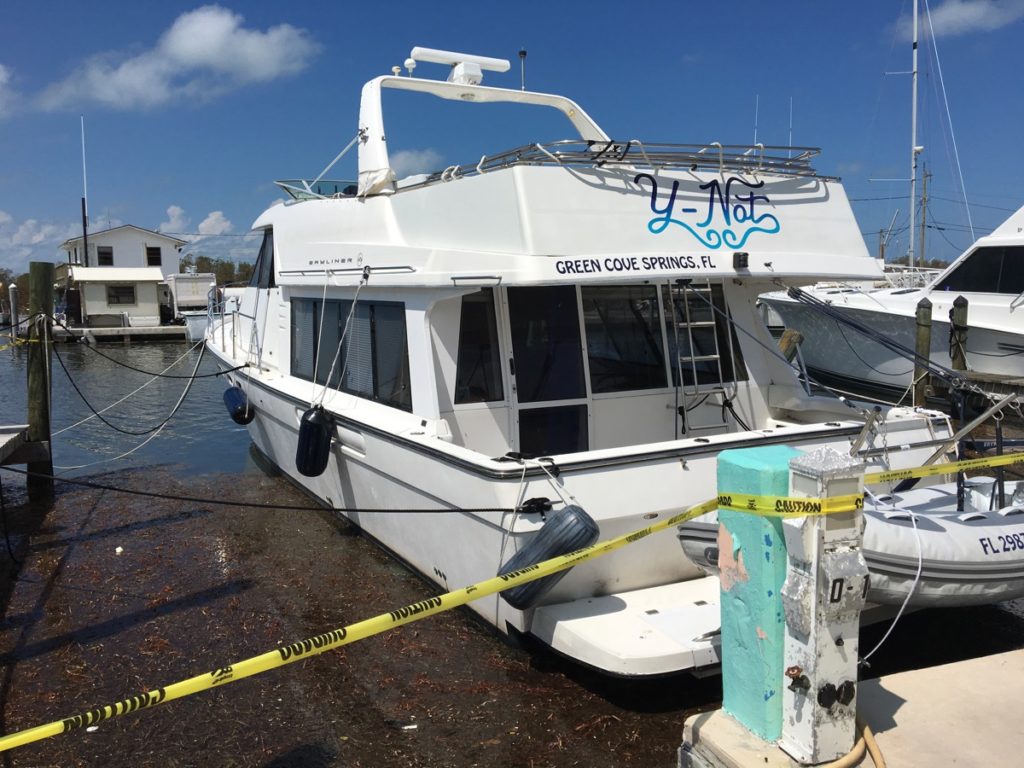
We weren’t so much concerned about the cost, as we were the remaining capacity if it was really needed after the storm (knowing getting fuel after the storm may be impossible.)
And we knew of no one staying around who could turn it on for us just before the storm hit.
We decided instead to leave the shore power plugged in, minimize our power loads of maximum battery capacity and keep the generator off. We figured this would keep the batteries full right up until the time the power would go out.
And if the storm did really hit, power was out and the boat was still salvageable – we’d trust we’d be able to get someone on board to turn the generator on before the batteries depleted.
Result: This decision played in our favor. We had no leaks that required the pumps, and we did have folks after the storm able to get aboard and get the generator running to top up the batteries just in case we sprung a leak.
Decision 7: To Lock or not Lock the Door?
We kept hearing stories of looters taking advantage of left property after a storm. Especially down in the Keys where we already knew we likely wouldn’t be allowed back for a bit.
It was a concern.
But we prefer trust in humanity and the goodness of people.
And we were already taking most everything valuable with us in the truck.
So we opted to leave our back door unlocked. A decision some may call us crazy or naive for.
We figured this would make it easier for someone to get aboard to save our boat or check on things before we could get back. And if someone did need any supplies onboard for their survival, we wanted to be in a position of helping not hindering.
And besides, if the glass wasn’t already damaged in the storm – it certainly wouldn’t keep someone with ill intentions out.
Result: It was the right decision, and we’d do it again. The kindness of folks who had early access to the island who got word back to us (and even a walk-thru FaceTime video once cellular signal was returned) truly warmed our hearts and kept our faith in humanity.
Decision 8: Sealing the Windows (or ‘Do Cat Treats Help in an Evacuation?)
Every bit of research we did stressed the importance of taping up all places water could get in – windows, doors, cracks, vents, etc. We had limited tape on board and the limited stores around us were out of stock already.
We had however ordered in some REVO tape from Amazon once the storm looked likely to pass by us. It’s the same stuff they use for winterizing boats up north, is supposed to leave little residue behind and be waterproof.
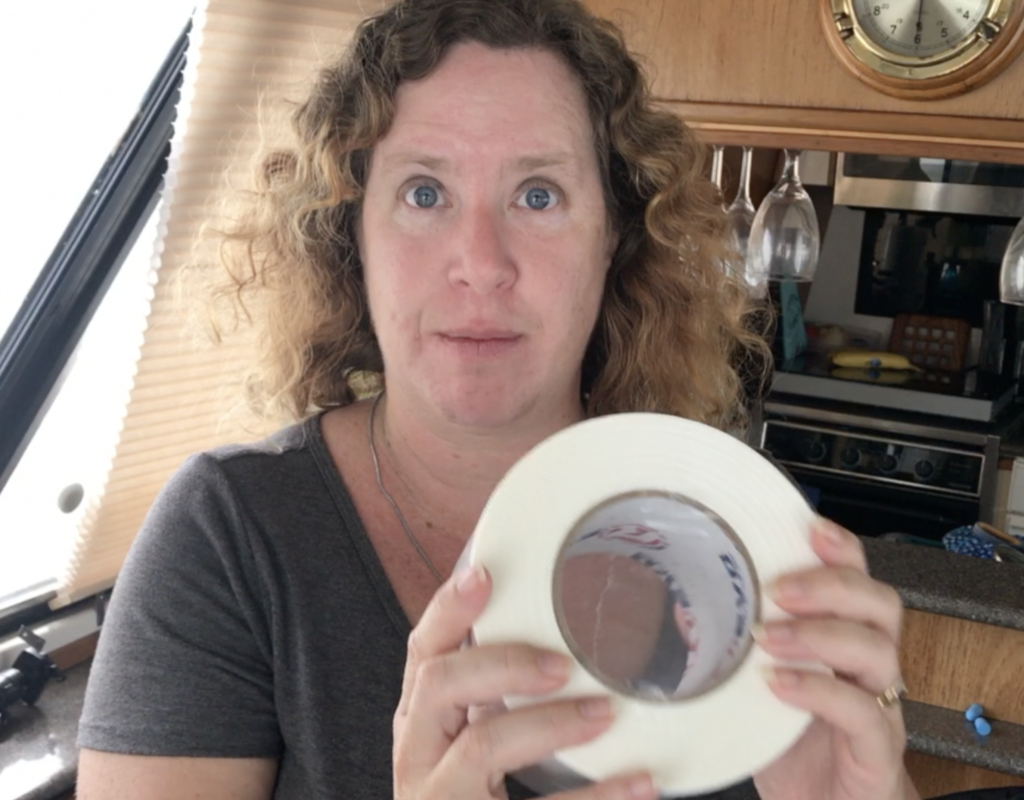
In that same order I also added a few extra chaffe guards, and some special toys for Kiki (cuz you know, cats).
All were due to arrive on Tuesday (Monday was Labor Day after all).
By the time we had to leave on Tuesday evening for mandatory evacuation, only one of our items had actually arrived.
So, our windows went untapped, while the cat had new toys to entertain her during the evacuation. And this was a major worry – we were honestly expecting lots of water damage.
Result: Thankfully, Irma wasn’t that wet of a storm and she moved very quickly over us – there was very little water ingress. Whew. But we will make sure we have these supplies on hand all the time.
And thank goodness the chaffe guards didn’t arrive, or we might have lost even more lines.
Decision 9: General Preps
We of course did all of the obvious things:
- Took down the bimini
- Brought all cushions and window covers inside
- Brought anything lose inside
- Topped up the fuel tanks (advantage of being right on a fuel dock) and filled the fresh water tanks (anticipating water would be down post storm.)
- We tried to clean out the fridge, but we spaced here and actually left some stuff in it that was a bit stinky on return.
During the prep process, we mentally vasilated from the panic of we’re preparing for a direct catosprophic strike (it was going to be really bad) OR the storm would miss and we were prepping for a tropical storm.
But given we had about 36 hours to manage our preps, I think we did pretty well. And we were incredibly fortunate to have had the direct strike AND survived with minimal damage.
Result: All and all, our preps definitely didn’t hurt us and decisions we made before the storm made returning to the Keys easier.
Y-Not – The Hurricane Survivor or Magnet?
We knew when we purchased Y-Not that she had gone through Hurricane Charley in Punta Gorda in 2003 – and had done quite well with minimal damage. The previous owner actually moved aboard while his house was without power.
Now with Irma, she’s a survivor of TWO major hurricanes.
Long time blog reader, fellow nomadic soul and friend Lucy sent us this lovely painting she made while watching coverage of the storm. It’ll be proudly displayed in Y-Not to commemorate the experience.
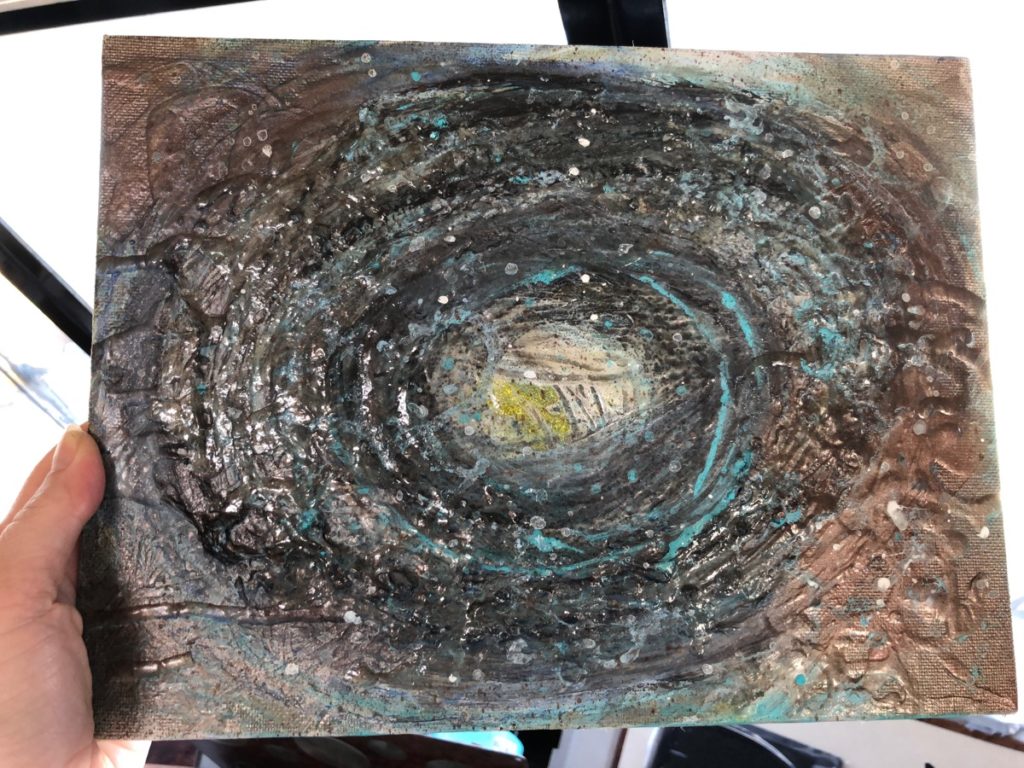
She also sent a second painting, that we left with Burdines, which will be displayed in their restaurant – leaving our mark behind.
We really don’t want to test to see if a third time is a charm. So this spring instead of taking a leisurely pace up the ICW, we’ll be moving right along up north. We want to be well out of the prime hurricane strike zones by the peak of season.

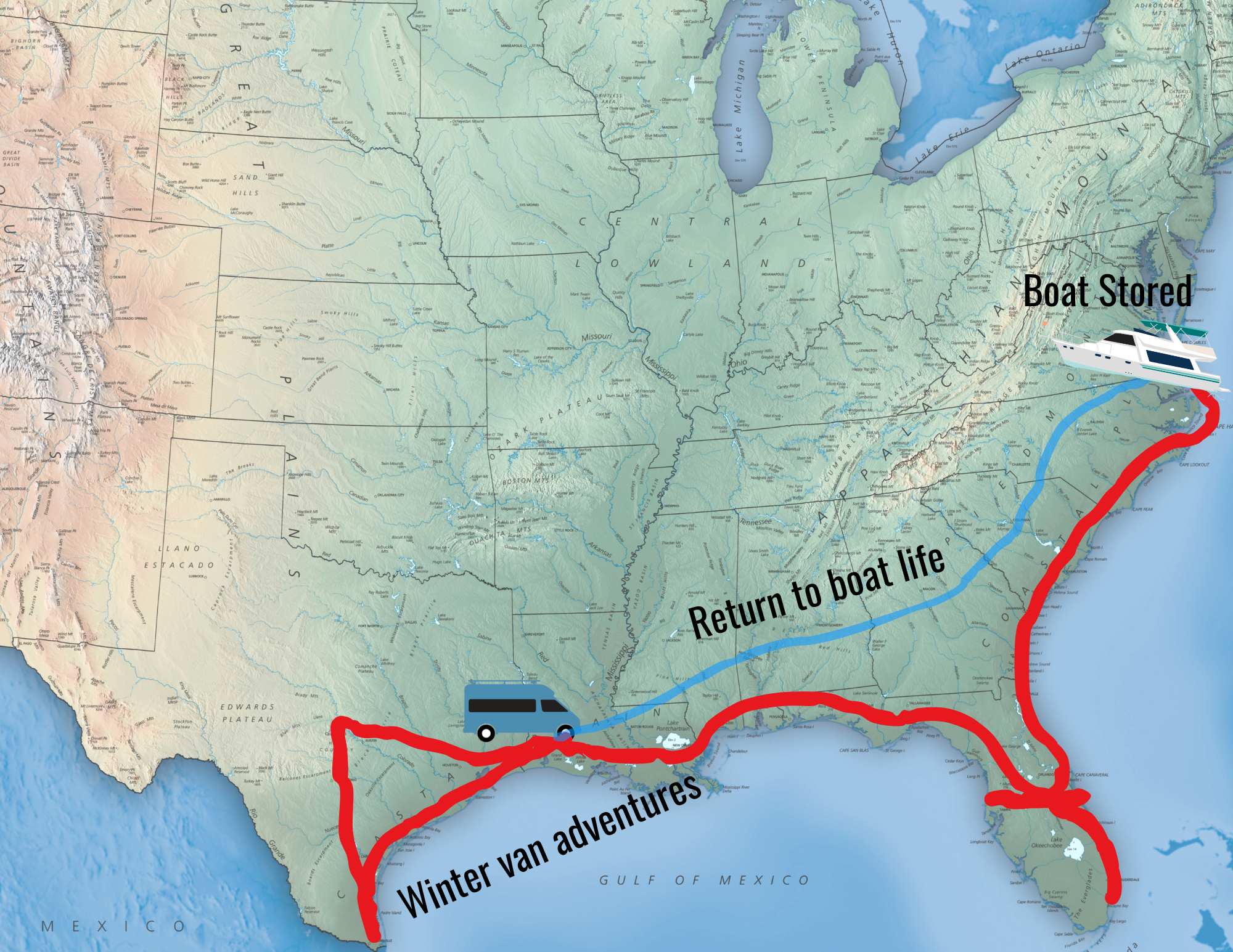
Regarding your most recent video/live cast (which is not Irma prep video but the one after), you asked people to comment about livecast vs. produced material. I have some strong opinions on this.
You guys would not have gotten to where you are without produced content. I would argue that Technomadia is like a recipe where the dish in question has many ingredients. The Technomadia dish has always been comprised of live and produced ingredients.
For those that watch you enough like I do who feel like we know you (when no one can really know someone across YouTube but that’s another issue), the live stuff without produced content is fine for us. But I argue you will not attract new fans with only live content.
I think when life is chaos for you because of Irma, boat repairs, or other personal turbulence then it is okay to not produce stuff. And don’t feel bad about that. Because I think you have enough inertia with your online ecosystem to easily get away with that. For a time. But don’t conflate the inertia of past success and what existing fans will watch with future new fans will need to get hooked. I’m sure some people that watched you 10 years ago, 7 years ago, or whatever, have since moved on to other interests and stopped following you (and not because of anything you did wrong). Along the way there have always new fans to take the place of inevitable attrition. And over time you have accumulated more new fans than you have lost to attrition.
Viewed through that lens, I think (and I could be wrong) you should continue to do produced material when you can. Never stop doing produced material when you can but otherwise think it is not appreciated or worth doing. Because it is appreciated and it is worth doing. You have to plant those seeds for future fans. And diversify the diet of existing fans. Also you have to think of different market segments (can’t believe I’m using that term with this, oh well ). Some segments are going to like the live stuff, some the travelogs, some the nerdy equipment stuff, etc., and yet others some combination thereof.
). Some segments are going to like the live stuff, some the travelogs, some the nerdy equipment stuff, etc., and yet others some combination thereof.
Overall, my sense is people who don’t know you won’t get hooked on only the live stuff. Overtime you will unnecessarily lose audience with only live material. If I’m right, then the best cocktail is to mix both. Easier said than done. Nonetheless, that’s the goal to aspire to.
I’m done rambling.
-Jim
A mix is definitely going to be there… but the travelogue content is actually brand new to the channel just this year. We’ve never really done that style before approaching the Great Loop (that’s the style of produced content we were specifically asking about.)
For reference, our live content is actually where we get most of our following, and the style that we actually started our channel with many years ago. It’s what built our channel and our audience. Despite all the advice that live content (whether we’re presenting on solar, lithium, how to get your mail, or just taking folks on a boat ride, etc.) and content over 20m is ‘bad’ – it’s consistently our best performing, most engaging and what endears us to folks.
Our live content is by far our most viewed content – some of it getting 100s of thousands of views. By comparison, our travelogues are mostly getting under 5000 views. And most our topical produced content gets under 10,000 views.
The numbers are just so telling.
Also keep in mind, our measure of ‘success’ is not how many followers we have (this is just a side hobby, not a business). But how fun it is for us. If were putting time into content that just isn’t be appreciated (ie. viewed), then its just not fun or worthwhile.
The current contemplation is.. do we continue to create produced travelogues… the style we introduced earlier this year or not?
I hear ya. Well, I thought about this a little more. What I most like about your material is the topical nature of it. For instance with equipment or specific issues related to RVing or boating. So whether that is in a live format or produced, I guess it doesn’t really matter. It didn’t matter with live TV in the 1940s and 1950s before decent recording methods became established. Some say live TV in those days was better TV. So live TV shouldn’t matter with Technomadia either.
As long as going (more) live doesn’t mean not conveying information or not covering topics you would otherwise address in produced material, then it makes no difference. Because I think that’s the real issue here, at least for me.
Otherwise, if live is easier for you guys, then Y-Not? Pun intended.
At the end of the day, you guys always make very rational and well reasoned decisions. No matter what you guys decide to do, I will still watch whatever you are willing to share!
Chris & Cherrie: As usual another great presentation on Sunday from the hard. It is always interesting to listen to your adventures, please continue. John on the Tenn Tom in Aberdeen, Ms.
Good grief, Kiki is even cuter in slow motion. Very instructive to hear your thought process, and how much of the result is dependent on the luck of the draw. Thank goodness the chafe guards were late!